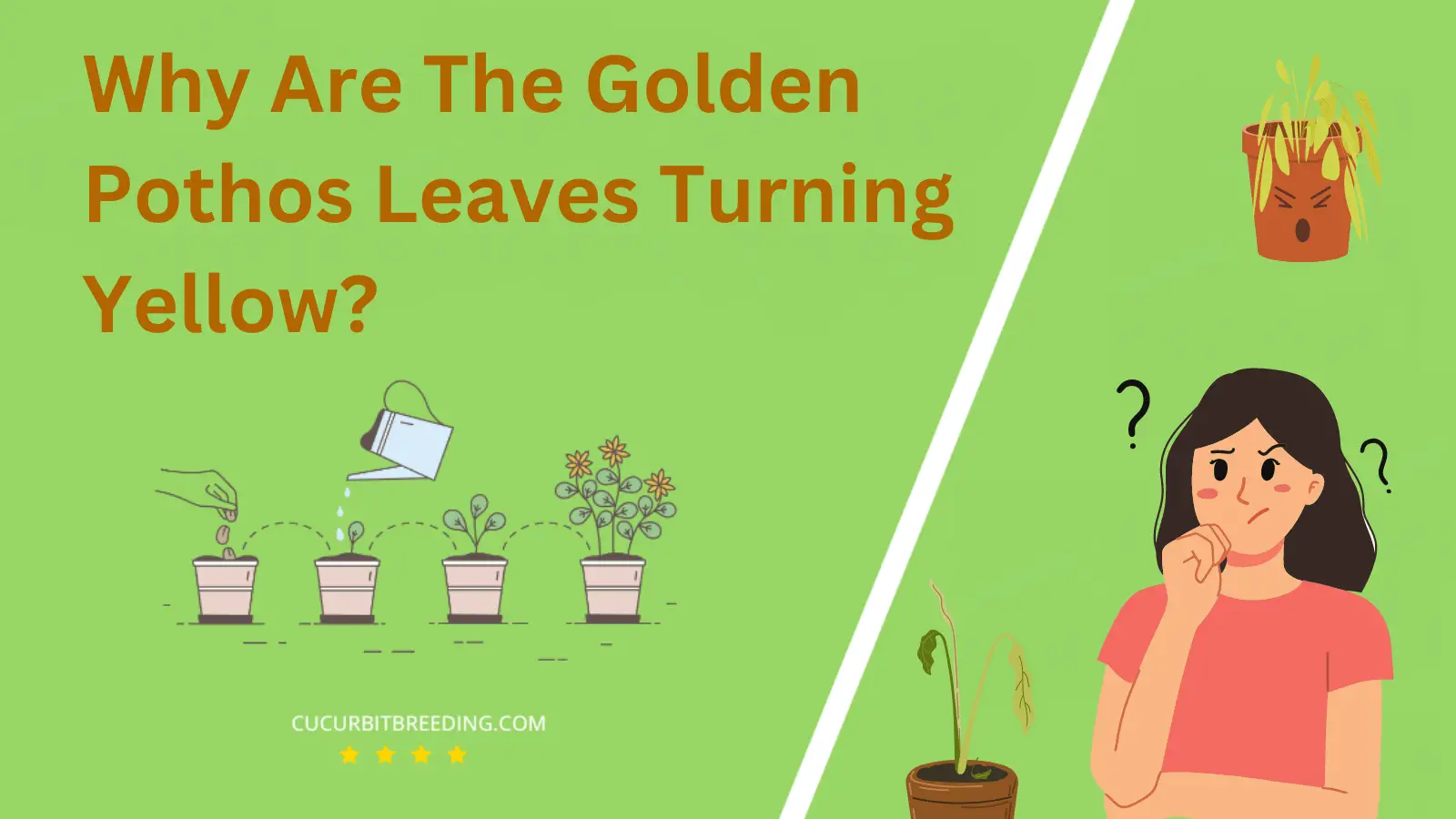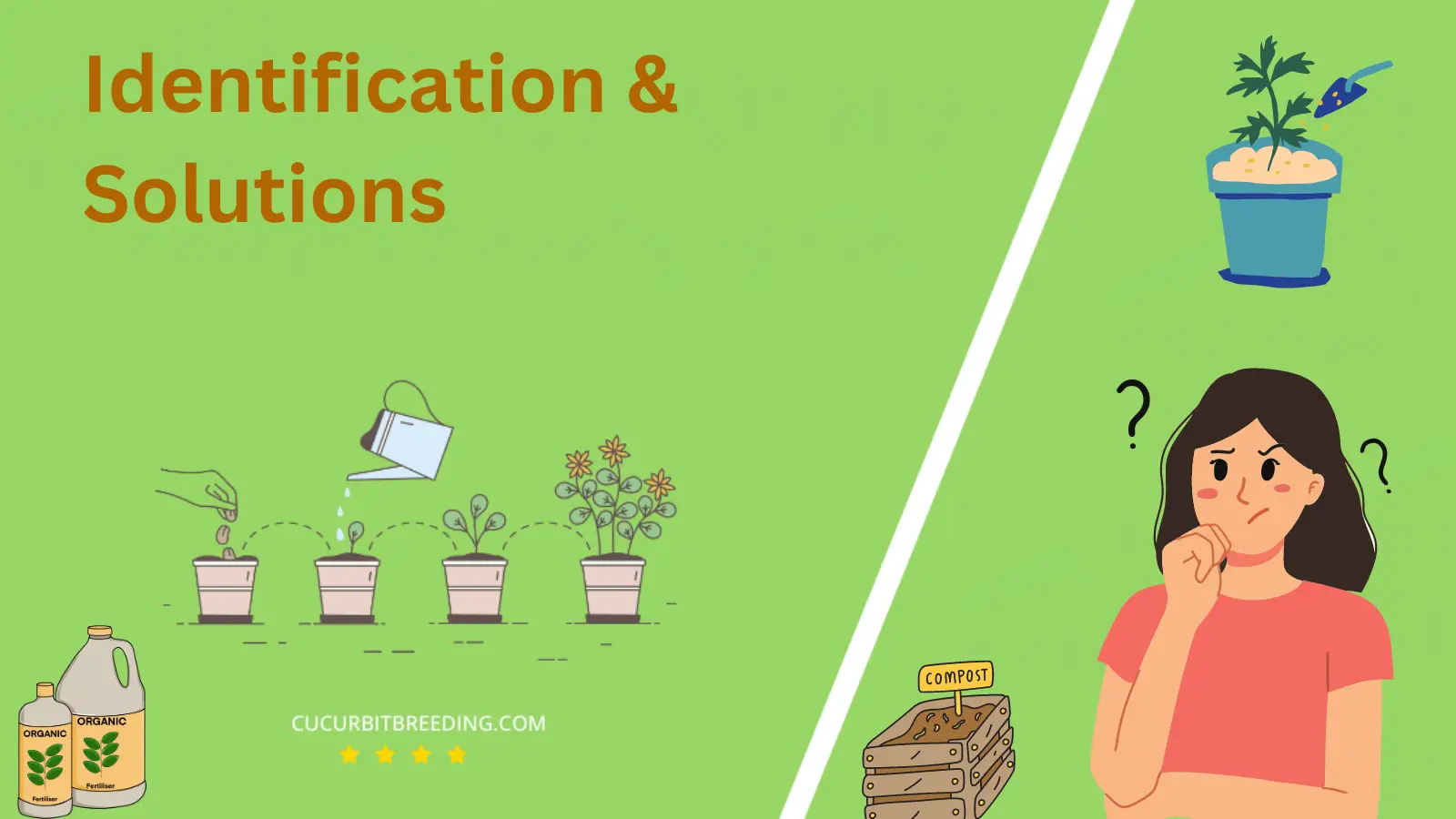
Witnessing your beloved Golden Pothos leaves turning yellow can be quite disconcerting as a plant lover. Is it a random color change or an indication of underlying problems? The answer may take you deeper into the fascinating, yet intricate world of botany.
Unraveling this species’ intricate behavior, understanding the telltale signs of stress or disease, could make the difference between a thriving green home oasis and a somber farewell to your cherished buddy.
Why Are The Golden Pothos Leaves Turning Yellow?
1. Overwatering
| Description | causes waterlogged roots, inhibiting nutrient uptake and resulting in chlorophyll degradation and yellowing of leaves. |
|---|---|
| Solution | Reduce watering frequency to prevent root rot and ensure proper drainage for healthy leaf color. |
Golden pothos leaves can turn yellow due to overwatering. This condition can drown the roots, thereby limiting their ability to draw out the necessary nutrients and oxygen that the leaves require, leading to the undesirable yellow. Such conditions also create the perfect environment for pathogens that ultimately cause root rot.
To address overwatering, it is crucial to modify your watering habits by allowing the top inch or two of the soil to dry out before watering the plant again. Another tip is to ensure that the pot has adequate drainage to prevent water from accumulating around the roots. Repotting the plant into fresh soil can also be beneficial if damages to the roots have already occurred.
Lastly, if you think the issue might be due to a disease, ensure to remove the diseased parts of the plant and consider applying a suitable fungicide. Prevention is always the best strategy, and avoiding overwatering can keep your golden pothos green and healthy.
2. Underwatering
| Description | Underwatering causes the chlorophyll in the leaf to break down, resulting in yellowing. |
|---|---|
| Solution | Water the plant more frequently to prevent underwatering and maintain proper moisture levels. |
Underwatering is one possible reason why your golden pothos leaves are turning yellow. Underwatering can lead to the plant not getting an adequate amount of moisture, which causes stress and may lead to the leaves turning yellow as the plant struggles to support all its leaves.
To remedy this, ensure you are providing the golden pothos with enough water. Keep in mind, these plants prefer their soil to be slightly dry, but not completely. Check the plant’s soil regularly, and when the top inch feels dry, water the plant thoroughly until water runs through the drainage hole, then allow the excess water to drain out. Ensure your plant pot has enough drainage holes to prevent waterlogging.
Moreover, try to establish a regular watering schedule, and stick to it. This can prevent dramatic shifts in moisture levels that can stress the plant. Also, consider the temperature and humidity in the plant’s environment, as these factors can affect how often you need to water. Remember, underwatering is just one potential cause for yellowing leaves. Other issues such as overwatering, insufficient light, or nutrient deficiencies might also lead to discoloration. If adjusting watering habits doesn’t improve the condition, consider seeking advice from a plant expert or conducting a soil test.
3. Lack of sunlight
| Description | The lack of sunlight causes the golden pothos leaves to turn yellow due to reduced chlorophyll production. |
|---|---|
| Solution | Increase exposure to sunlight for golden pothos leaves to prevent yellowing. |
Lack of Sunlight’s Effect on Golden Pothos
Golden pothos being a tropical plant, requires a specific amount of sunlight for photosynthesis and growth. When there’s insufficient sunlight, the plant is unable to photosynthesize efficiently, causing the leaves to turn yellow as a result of chlorosis.
Solutions for Insufficient Sunlight
To rectify this, the plant needs to be moved to a location where it will get a medium to bright but indirect light. However, very intense direct sunlight can scorch the leaves, so it’s necessary to maintain a balanced exposure. If natural light isn’t available, consider using a fluorescent light for 12 hours a day. A regular check-up on the plant’s light exposure can greatly improve its health and avoid yellow leaves.
Maintenance After Rectifying Light Issue
Ensure to regularly clean the leaves to allow maximum light exposure. When the light conditions are improved, continue to monitor the plant to ensure it starts growing green leaves again.
4. Nutrient deficiency
| Description | The lack of sunlight causes the golden pothos leaves to turn yellow due to reduced chlorophyll production. |
|---|---|
| Solution | Increase exposure to sunlight for golden pothos leaves to prevent yellowing. |
Golden pothos plants typically turn yellow due to a nutrient deficiency. This occurs when the plant is not receiving enough of a specific nutrient it requires for growth and sustenance, mainly Nitrogen. Lack of Nitrogen can affect the plant’s ability to produce chlorophyll, causing the leaves to turn yellow as they are unable to properly photosynthesize.
To rectify this issue, fertilizing your pothos plant with a balanced, water-soluble fertilizer can prove beneficial. Ensure to follow the recommended dilution rates on the fertilizer package to avoid over-fertilization. Also, while replenishing nutrients, be mindful of your plant’s watering needs. Over or under-watering can also contribute to yellowing leaves. Small adjustments to these caretaking practices should eventually reverse the yellowing and restore your plant’s stellar green hue.

5. Pests or diseases
| Description | Increase exposure to sunlight for golden pothos leaves to prevent yellowing. |
|---|---|
| Solution | Apply insecticide or fungicide to treat pests or diseases causing yellowing of golden pothos leaves. |
Pests or diseases can be a significant reason why Golden Pothos leaves may turn yellow. Insect pests, such as spider mites, aphids, or mealybugs, can cause damage to the plants that manifest as yellowing leaves. They feed on the sap of the plant, which can weaken the plant and cause its leaves to yellow and drop.
To address a pest issue, first, closely inspect your Golden Pothos for signs of these pests. You may see the insects themselves, or you could spot the damage they cause, which often appears as yellowing leaves with curled or faded edges. If you confirm a pest infestation, you can treat the plant with a mild insecticidal soap or an eco-friendly pesticide designed for houseplants.
Diseases can also cause the Golden Pothos leaves to yellow. The most common diseases in pothos are root rot and leaf spot disease. Root rot is usually caused by overwatering, while leaf spot can happen due to bacteria or fungi.
For diseases such as root rot, it’s advised to cut off the affected parts of the plant and repot it in fresh, well-draining soil. A preventative measure would be to ensure your Golden Pothos is in appropriate conditions, such as well-drained soil and proper watering routine. For leaf spot disease, remove the diseased leaves and apply a suitable fungicidal spray. Always remember, prevention is better than cure, and maintaining the correct environmental conditions can help prevent many plant diseases.
6. Temperature stress
| Description | The golden pothos leaves turn yellow due to temperature stress affecting their physiological processes. |
|---|---|
| Solution | Adjust temperature to optimal range for growth. |
The golden pothos, like many other plant species, is quite sensitive to changes in temperature. Temperature stress can certainly lead to the yellowing of its leaves. This is often the result of exposing the plant to conditions too cold or too hot for its optimal growth. These drastic temperature changes create stress for the plant, affecting its usual physiological functions like nutrient absorption, causing the discoloration.
To address this issue, you should ensure that your golden pothos is kept in a stable environment where the temperature is consistently between 70-90°F (21–24°C). Avoid placing it near sources of extreme temperature changes, like air conditioning vents, heaters, or drafty windows. If the plant is outdoors, consider moving it to a sheltered area where it’s protected from the harsh elements. Regularly check that the temperature conditions remain within the plant’s comfort zone, and adjust your plant’s location as needed to help it thrive.
7. Aging leaves
| Description | The breakdown of chlorophyll molecules in aging leaves causes them to turn yellow. |
|---|---|
| Solution | Increase nutrient intake and provide proper hydration to rejuvenate and maintain healthy leaf growth. |
Golden Pothos leaves can turn yellow due to a variety of reasons, among them is overwatering. When Golden Pothos plants are overwatered, it may induce root rot which can prevent the roots from absorbing the necessary nutrients and water. Consequently, the leaves may start turning yellow.
To rectify this situation, you must first check the moisture level in the soil before watering your Pothos plant. Make sure the top 1-2 inches of soil are completely dry before the next water schedule. Pothos plants generally prefer to dry out completely between waterings.
Moreover, it is crucial to ensure good draining. The pot shouldn’t hold stagnant water. If the situation is severe and the plant is already suffering from root rot, you may need to repot the plant, cutting off any rotten roots and using fresh soil and a pot with good drainage.